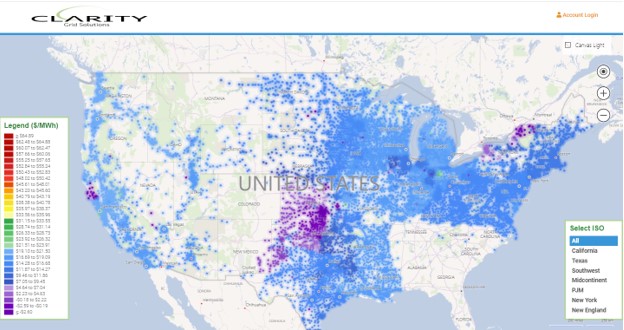Wholesale prices as reported by the 7 US ISOs (Independent System Operators) come in two flavors:
- Next-Day, in which power is priced for delivery for the following day with each of the 24-hourly prices set independently.
- Real-Time, in which the price for power is (usually) set after the 5 minute to 1 hour settlement period has been realized.
In both cases the price for power settles at an hourly price which reflects daily or seasonal variations in consumption. Virtually all power in US markets where an ISO operates (70% of the US!) is initially purchased and sold under this pricing paradigm. Large market participants then use these to establish the basis for fixed price terms ranging from one month to several years in the future. Although FERC regulated ISOs establish the basis for most power transactions initially and are an objective and verifiable source of price discovery, these prices are rarely used or referenced outside of the sophisticated power market industry. In fact, industry publications that track energy contracting report that fixed prices dominate, ranging in share between 82-87% of all contracts in deregulated markets1.
This despite the fact that our data indicates that index contracting is usually between 10-40% less expensive than fixed on an annual basis.
One potential factor in discouraging the use of wholesale (index) pricing is the need to independently price each hour against the actual or estimated usage over that hour. Keep in mind that a customer’s historic usage can vary by several multiples even between hours in the same day! While the proliferation of smart meters and standardized data protocols (Smart Meter Texas, Green Button, My Usage) has facilitated the ability of an electric consumer to understand their billing under real time pricing, the process remains cumbersome. In most cases, brokers, REPs, and or large end users track usage across different data formats and different locations in separate files making storage and updating this data difficult.
Clarity Grid’s platform accommodates files of varying formats and assigns usage data to specific locations while also storing it under each customer’s unique profile. This combined with an exhaustive data library of wholesale prices across the US, makes calculating the economics of contracts at wholesale prices easy, allowing greater focus on customer support and care.
1. https://www.engieresources.com/moderate-risk-appetite-accross-markets

